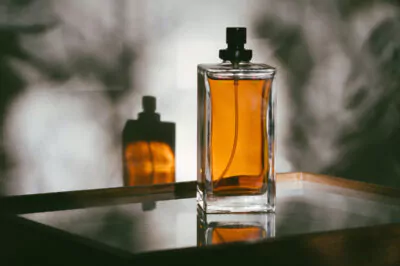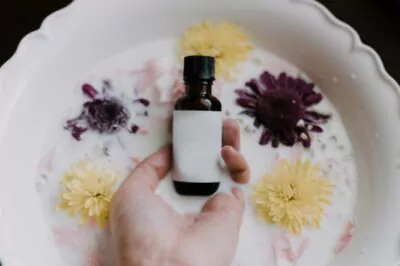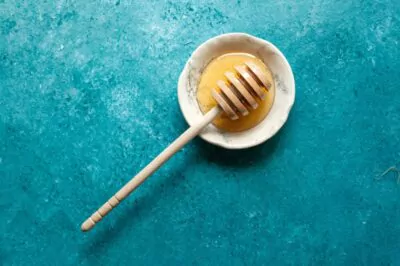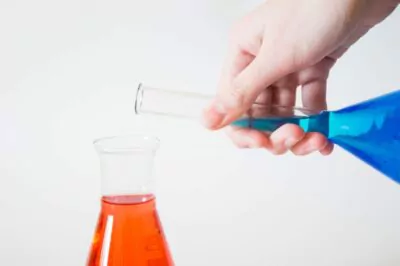If you’ve ever squeezed onto public transportation on a hot day, you can attest to the importance of smelling good. It’s something our culture is pretty devoted to, in fact.
And you don’t have to look far to find products that help you smell good. Deodorant, perfume… Even products like lotion or face wash that aren’t meant to help us smell good usually include fragrance in them.
Have you ever wondered what ingredients are in your perfume that makes it smell like the thing that it smells like?
Maybe you’ve gone so far as to investigate the perfume ingredients, either out of curiosity or concern. If you have, you’ve probably seen the word ‘fragrance’ listed on the ingredient label.
Fragrance: It’s a Secret
The Federal Fair Packaging and Labeling Act of 1973 required companies to list the ingredients on their cosmetic product labels. Everything except fragrance.
Fragrance is a trade secret, allowing companies to withhold information on their proprietary blends. On one hand, that makes sense. You have a special product and you want to create, market, and profit from it. That’s fair.
But this loophole is often used to mask chemicals that have been shown to be harmful or untested altogether. If there’s something a company doesn’t want to disclose for whatever reason, they can simply (and legally) lump it under the name ‘fragrance.’
And while companies are required to disclose non-fragrance ingredients in perfume, the FDA does not have the authority to require these companies to test their products for safety before they are put on the shelves. So that leaves it up to the consumer to research the ingredients that are listed on the label in order to determine whether or not it’s safe to use.
Campaign for Safe Cosmetics Tests Perfumes
The Campaign for Safe Cosmetics is a project by the Breast Cancer Fund which has been working since 2004 to educate consumers about toxic chemicals in their products and to put pressure on the industry to change. Knowing what they know about the chemicals in the fragrance loophole, they decided to test name brand perfumes to see what they found. This was back in 2010.
They tested 17 different perfumes and found a total of 38 chemicals that were not listed on the labels, with an average of 14 unlisted chemicals in each product.
American Eagle Seventy Seven topped the list with 24 undisclosed chemicals. Chanel Coco was not far behind with 18.
Some of these perfume ingredients were what you’d expect (or hope for): harmless fragrance ingredients that make up the proprietary blend. But many of them were preservatives and additives that are questionable.
In reading through the CSC’s study we noticed that a lot of the undisclosed chemicals were ones that have suspected or proven effects on your hormonal system. Here are 5 that are concerning to us:

5 Perfume Ingredients that Can Affect Your Hormones
1. BHT
BHT and other butylated compounds (BHA is another common one) are used to preserve products to lengthen their shelf life. Which is convenient for you, because that means you don’t have to store your perfume in the freezer.
And while not all preservatives are harmful, this one is.
There’s evidence that suggests that BHT mimics estrogen, meaning it could compete with the estrogen in your body for binding sites, potentially throwing off your hormone balance. This is a problem for both men and women.
In some situations BHT can also promote the growth of tumors.
BHT bioaccumulates in the body over time, so even a product that contains a miniscule amount can cause harm in the long run. And it’s not just used as an perfume, you’ll find BHT in makeup, skin care, diaper cream, even food! Fatty food products like chips, baked goods, butter, meat, and vegetable oils often have BHT added to prolong their shelf life. This means that avoiding it is hard, but worth it. That is if you don’t want a build up of estrogenic compounds in your body (which you don’t).
6 of the perfumes that the Campaign for Safe Cosmetics tested contained BHT.
2. Oxybenzone
Only 1 of the perfumes tested in the CSC’s study contained oxybenzone, but the fact that it was there at all had us scratching our heads. Normally when you’re checking a label for oxybenzone, it’s because you’re buying a sunscreen.
Oxybenzone is a chemical sunscreen, meaning it absorbs UVA and UVB rays (contrasted with physical sunscreens like zinc oxide, which block the rays). The problem with oxybenzone is that when light hits it, the chemical reaction that occurs seems to actually produce harmful compounds. This is certainly not a quality you want in an ingredient in your sun protection products.
Another issue with oxybenzone is that there’s evidence that it mimics estrogen, similarly to BHT, potentially contributing to hormone imbalance. Hormonal imbalance can lead to infertility, improperly developed sexual organs, and decreased sperm count in men.
In 2008, the Center for Disease Control and Prevention (CDC) reported that nearly all Americans were contaminated with oxybenzone, with women more likely in the top 95th percentile of those tested. It’s possible that this difference is due to the personal care products that women use.
Why oxybenzone showed up in one of these fragrances is unclear, but it’s not good.
3. Phthalates
Phthalates are a group of chemicals used in a number of different products: food packaging, vinyl flooring, detergents, and pharmaceuticals, to name a few. Also called plasticizers, they’re used to make plastics more flexible.
In perfume, they help the scent adhere to your skin. This is of course what you want when you’re putting on perfume, which is why all but 4 of the products that the CSC tested contained diethyl phthalate.
Phthalates have been shown to disrupt the endocrine system, thereby interfering with normal hormone production. A study conducted by the University of Maryland reported that exposure to phthalates could cause reproductive abnormalities and decreased production of testosterone in males, as well as decreased male fertility. Other studies show a link between phthalates and premature delivery and endometriosis in women.
This group of chemicals is widespread. The Center for Disease Control and Prevention (CDC) tested urine from 2,500 people and found 13 phthalate metabolites. Adult women, again, had higher levels than men. More concerning yet is that infants exposed to baby shampoos, baby powder, baby lotions and other such products showed increased levels of phthalates in their urine.
Diethyl phthalate is used in relatively high concentrations in perfumes.
4. Octinoxate
A UV absorber, octinoxate is commonly found in sunscreen products and was found in 8 of the brands tested by the CSC.
The EWG Skin Deep Database (if you haven’t checked it out yet, do it! It’s a great resource for vetting personal care products.) gives octinoxate a 6/10, 10 being high hazard and 0 being low to no hazard.
Octinoxate has been found in mother’s milk, suggesting widespread population exposure. In lab cultures it was shown to bind to and stimulate estrogen receptors. In an animal study octinoxate increased the weight of the uterus, an indicator of estrogen response, which can cause long-term negative effects.
These studies are good indications that we should be avoiding products with octinoxate when possible.
5. Musk Ketone
The International Journal of Hygiene and Environmental Health published a study that outlined the effects of musk ketone, both on human health and on the environment.
Characteristically nonbiodegradable, musk ketone has been found in aquatic environments, affecting the wildlife that inhabit them.
That’s not the only place it accumulates… Musk ketone has also been found in fatty tissue and breast milk, indicating that people are being regularly exposed.
Beyond being associated with endocrine disruption, musk ketone has also been shown to induce phase I enzymes in rodents and to be a cogenotoxicant in cultured human cells. This indicates it as a carcinogen.
Musk ketone was only found in one of the perfumes that the CSC tested, but is likely found in others on the shelves.
It’s difficult to shop for a safe perfume. Until companies are required to disclose their perfume ingredients consumers are at a loss to determine whether a product is safe or not.
Benefits of Essential Oils
This article was ‘the bad news.’ For the good news, see this article.
What’s your favorite way to smell great, naturally?
by Hope Freije
Sources:
Our Little Place – Twenty Most Common Chemicals in Thirty-one Fragrance Products [based on a] 1991 EPA Study
Annmarie Skin Care – Ingredient Watch List: Fragrances and Perfumes
Scientific American – Scent of Danger: Are There Toxic Ingredients in Perfumes and Colognes?
The Campaign For Safe Cosmetics – Not So Sexy: The Health Risks of Secret Chemicals in Fragrance
International Journal of Hygiene and Environmental Health – Evaluation of Health Risks Caused by Musk Keton
EWG’s Skin Deep Database – Musk Ketone








I totally agree with your article and that’s why I use givescent perfume/eo’s! What is your thoughts on this company and their products? http://givescent.com
Thanks for such helpful, healthy information.
Holly Seerley
A Cancer Surviver of Estrogen Positive C